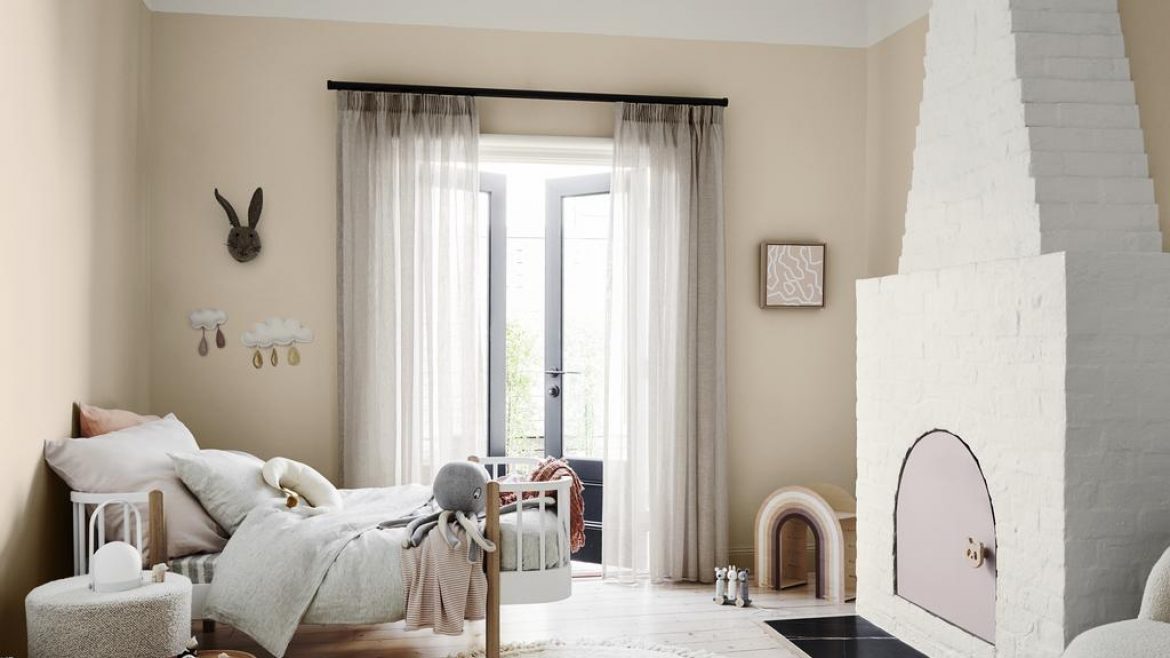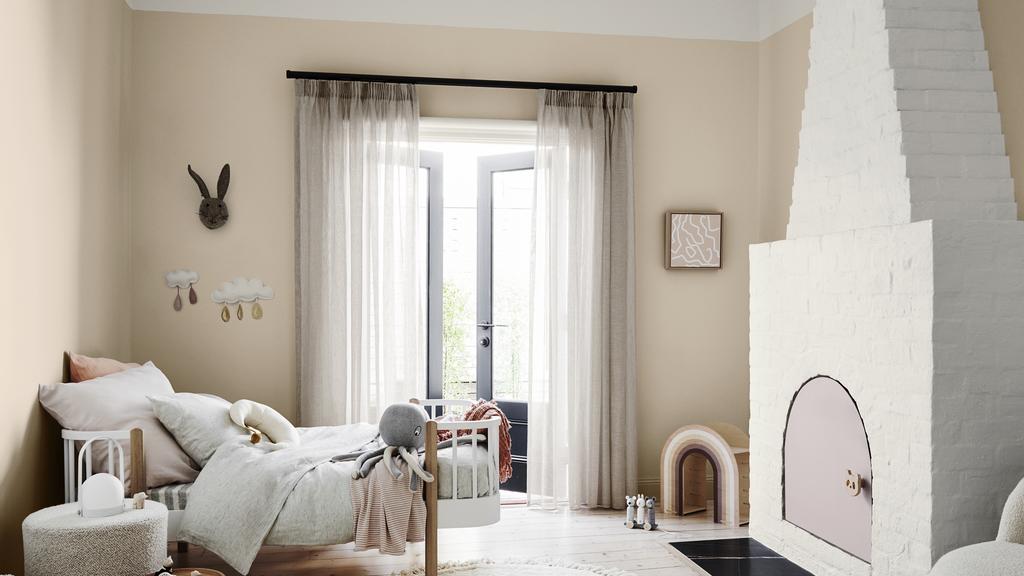
After. Photo: Lisa Cohen. Dulux colours used: Dulux Wash&Wear in Pancake Mix, Natural White and Hint of Lavender. Artwork on far right by Tracey Mock.
A bright and bubbly colour scheme was once widely accepted as the go-to look when decorating a child’s bedroom.
Rooms saturated in vibrant hues were considered more friendly, fun, and playful. But today, muted and earthy tones are gaining momentum.
Stylist Bree Leech has noticed a shift away from using lots of vivid shades to avoid overstimulating a child.
RELATED: Interior design on a small budget: How less money can be a big win
Picking colours, interior design: Being bold with colours, patterns
Interior design based on your star sign: Style tips from the stars
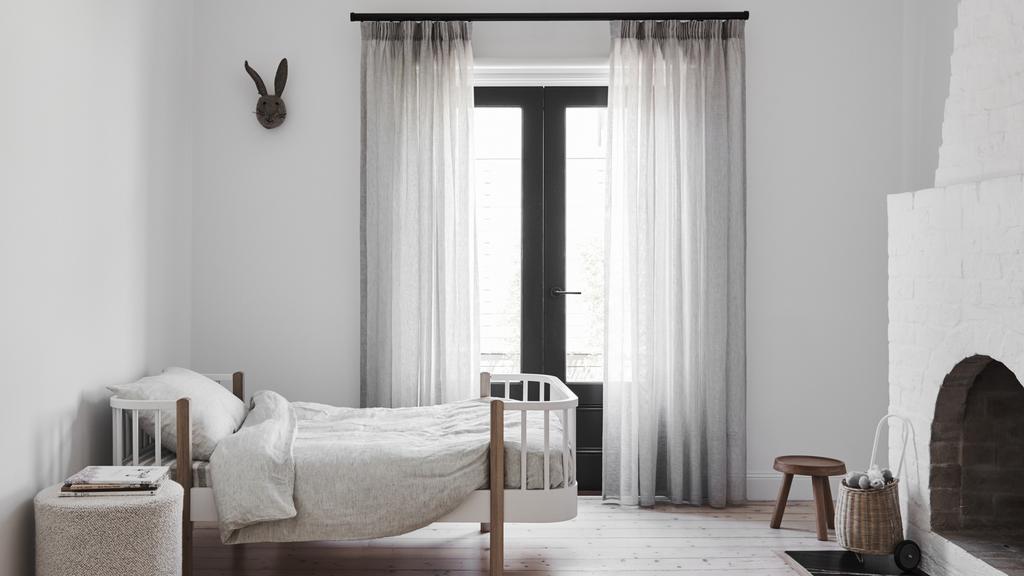
Before. Photo: Lisa Cohen.
“More often now, the focus in a bedroom is to be more relaxing for downtime and sleep, especially with younger children,” Ms Leech said.
She chose a pared-back palette for the room pictured, which was all white and felt uninviting before she styled it for Dulux.
The new colour scheme made it cosier, Ms Leech said.
“You want to maintain a sense of calm, but at the same time not be boring,” she explained. “It should also have elements that make the child feel comfortable and easily identify the space as theirs.”
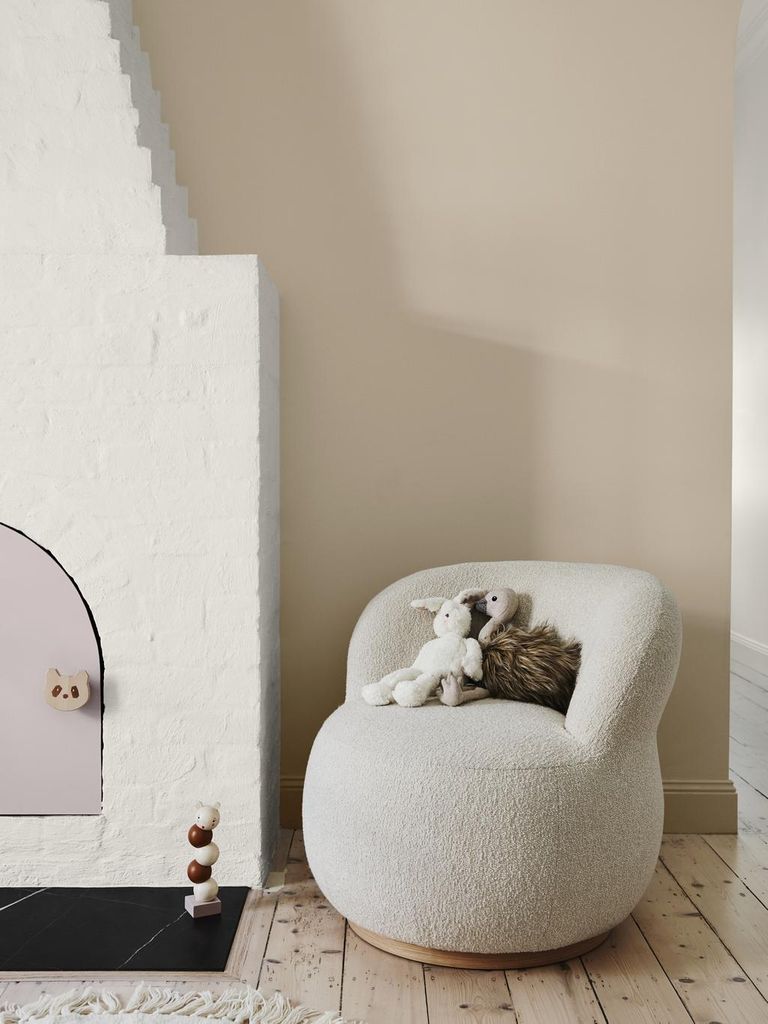
Calm tones. Photo: Lisa Cohen
Colour code
Ms Leech said a putty-biscuity tone on the walls offered a soothing backdrop for this child’s bedroom.
Crisp white was used to highlight architectural features, such as the ceiling and fireplace. And hints of soft colour were picked up through artwork, bed linen and a lavender door on the fireplace, which was cleverly converted into a toy cupboard.
Given kids’ bedrooms weren’t typically very big, Ms Leech suggested picking colour that would add personality but not overwhelm the space.
“Proportion is really important when it comes to colour. It’s easy to get carried away and go too far,” she said.
Having a muted or neutral base palette created a restful feel and allowed the room to be adapted with ease as your child grew. Ms Leech said this colour scheme would comfortably relate to the rest of the home, too.
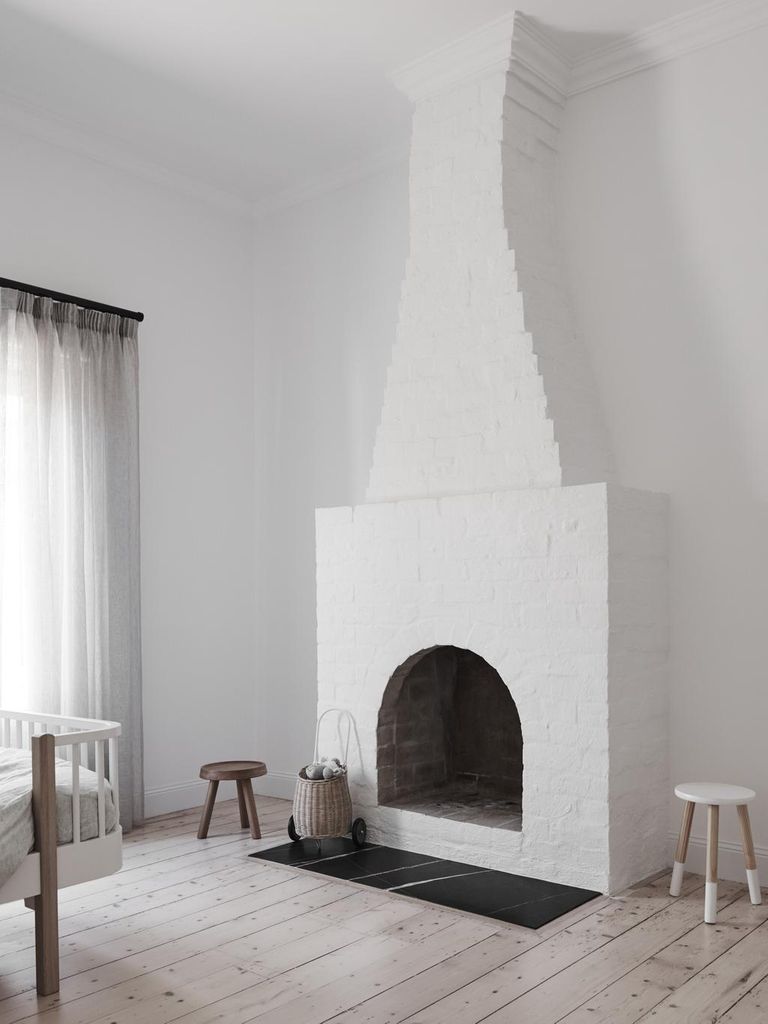
Beforehand. Photo: Lisa Cohen
Softly, softly
Ms Leech advised taking a gentle approach when decorating, which meant layering in lots of texture.
When dressing the bed for this room, the stylist piled it high with comfy pillows so it
became the hero of the space.
Adding a rug not only brought in softness underfoot, but helped draw the eye towards the bed.
Be sure to add contrast when applying texture to the space. Too much of the same thing and the look would fall flat, Ms Leech explained.
“You want to mix the textures up a bit and have lots of things they can touch that make them feel good,” she said.
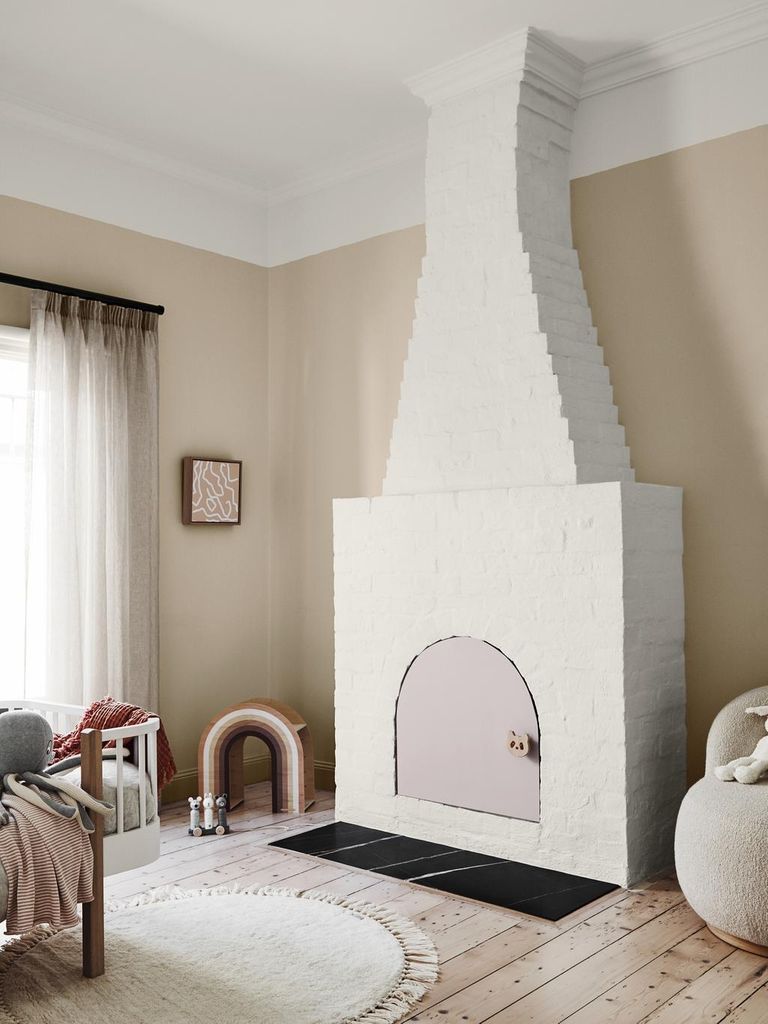
And when complete. Photo: Lisa Cohen. Artwork: Tracey Mock.
Personal touch
Pay attention to your child’s interests and find ways to refer to them when styling the room, Ms Leech suggests.
It could be they like elephants, and you might interpret this in a wall decal.
“Get your child to pick out a print they love or have an illustrator create something inspired by their favourite story,” she added. “You could even go with something sculptural.”
Elements like these would help your child feel more connected to their room and create points of difference that went a long way towards personalising it.
Don’t be tempted to load the space up, either. Ms Leech advised using a light hand when decorating.
“It’s really easy to put too much into a kid’s room and suddenly, it’s not peaceful,” she said.
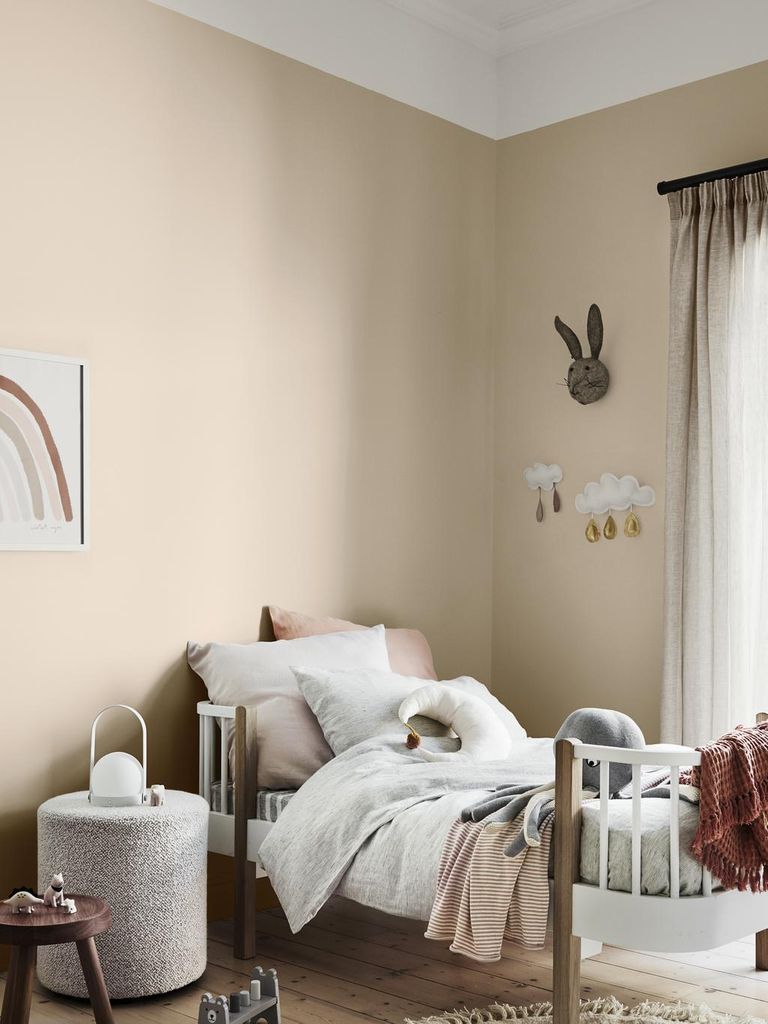
Dulux colours used: Dulux Wash&Wear in Pancake Mix and Natural White. Photo: Lisa Cohen
Attention to detail
Focal points are essential, but not every wall or every corner needs one, according to Ms Leech.
“If every wall is trying to show you something different, then the space will be screaming at you,” she added.
“And if that’s how you feel when you walk into the room, you can imagine a child will feel even more stimulated.”
She recommended building key moments around the room that would creatively introduce things to make your child smile.
A quirky handle in the shape of a teddy bear face was added to a cupboard door in this bedroom for a pop of fun.
Ms Leech said a similar approach could be applied to wall hooks or curtain tiebacks.
“It’s the little surprise details that bring in touches of whimsy and elevate the room from being too conservative to something more fun,” she said.
MORE: Victoria’s most popular homes of 2020 revealed
Ann James’ picture-perfect old Ringwood North home for sale
Great Gatsby house, Balwyn North Art Deco design has Rivoli-inspired cinema
Handy hints
● Think beyond the lines of the room. By not painting the walls all the way up to cornice, you make the ceiling appear higher than it is.
● Bring in an occasional chair or ottoman to provide another space to sit apart from the bed.
● Create activity areas such as a reading nook or table in a corner to do craft, draw and build things.
● Soften the look of a window with dreamy drapes. Let them drop to the floor to make a short window feel larger.
Source: Bree Leech, stylist
The post Designing a child’s bedroom: How to create a calming child’s room appeared first on realestate.com.au.

